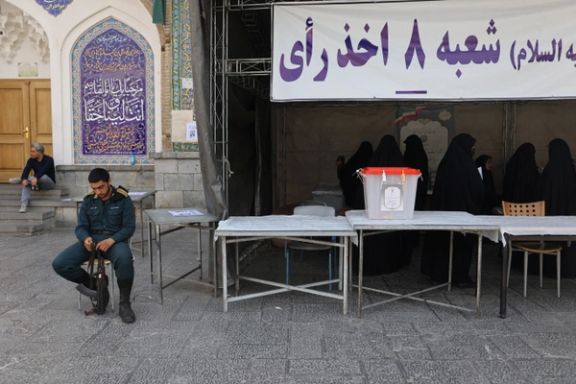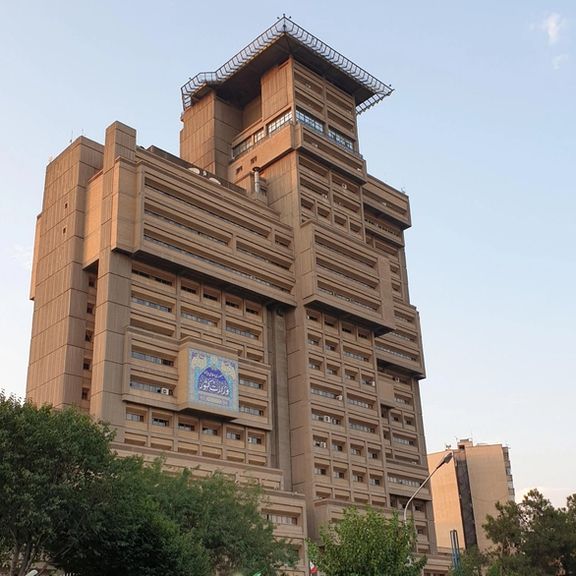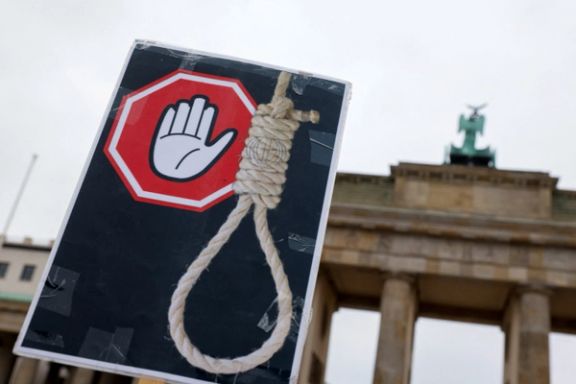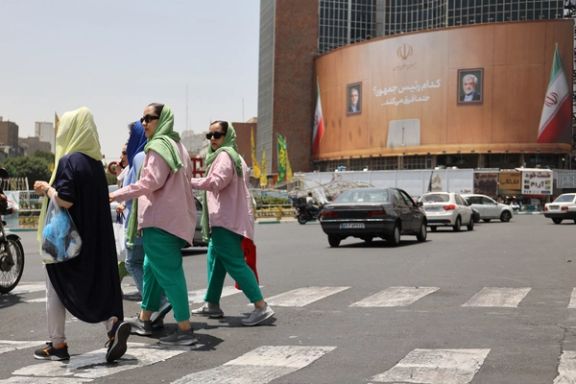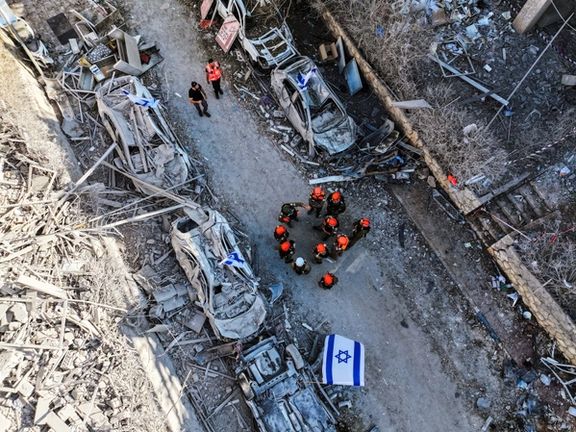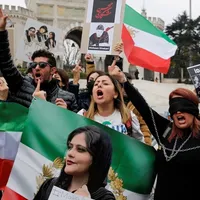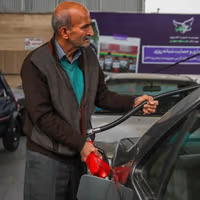“The term 'reformist' no longer illuminates their position, and they cannot be addressed by this title because they were supposed to bring about fundamental change in the existing system, but not only have they retreated from this stance, they have also taken a conservative position and openly state that they are here for the survival of the system,” Hedayat told journalist and TV host Mehdi Mahdavi Azad.
No candidate secured a majority in last week's snap presidential election, leading to a runoff this Friday between Masoud Pezeshkian and Saeed Jalili.
With over 60% of the electorate abstaining and numerous dissidents having called for a boycott of the election, many, including Hedayat, viewed this as a victory for the Iranian people, demonstrating the state’s lack of legitimacy.
“I feel that the people spoke last week. Without access to media, their voices were directly heard,” Hedayat said, calling on others to adhere to the “people's decisive ‘no’ to the Islamic Republic”
“Not only did the intellectuals and elites not help the voices of the powerless and voiceless people of Iran to be heard but they also have not recognized the people's victory last week,” she said.
Hedayat, who began her political activism with a reformist stance in the early 2000s, has endured several years of imprisonment, including a seven-year sentence for protesting the 2009 election results. She also publicly criticized the Iranian government for the Islamic Revolutionary Guards’ downing of Ukrainian Flight PS752, receiving a four-year prison sentence for her actions.
In recent years, she has publicly shifted her political stance, advocating for the overthrow of the Islamic Republic.
The 42-year-old political prisoner, currently on temporary medical furlough, said she agreed to this interview, despite the risk of being sent back to the notorious Evin prison. In March, she revealed that doctors discovered early-stage cancer cells in her uterus following a routine gynecological visit.
"The very reason for this interview is to convey my protest to the ears of the people, in regards to the intellectuals and the elites who in these days put their efforts to back one of these [presidential] candidates,” she said.
Referring to Pezeshkian, the so-called reformist candidate, she refused to mention his name, stating, "He is that insignificant, and the issue is so absurd."
Hedayat named several individuals who reportedly participated in the election, thereby undermining the Iranian people's victory in abstaining.
"Keyvan Samimi and Alireza Rajai. A group of left and right-wing economists and other elites involved in shadowy politics in Iran have come forward and announced their support," she said, questioning, "What are you supporting, and how can you not hear the people's voices?"
Reflecting on her own past participation in elections, she stated that she understands the propaganda used to encourage voting.
Hedayat argued that the reformist movement has fundamentally failed, having either lost or never had influence, and made no progress even when they controlled the parliament and government.
“When they had the parliament and the government they couldn't take a step forward. Now, with this radical parliament, who do you want to send there to gain a vote of confidence?,” she said.
Arguing that the issue lies not in individual candidates, but in the systemic failure of the reformist project, she said “it's not that, for example, Jalili is bad, Pezeshkian is good, or Pezeshkian is bad and Jalili is worse."
Hedayat criticized Pezeshkian for his public statements of unwavering support for the Supreme Leader, questioning his credibility to advocate for protesters' rights.
According to the dissident the political landscape in Iran is fully occupied by figures like Jalili's team, leaving no space for reformists or any other forces to make an impact, and lacking the power to displace them.
"The issue is the gap that has arisen between the elites and the people who rightly and justly protest the current situation, and unfortunately, these people do not receive support from their elites," Hedayat said.
While criticizing intellectuals and elites who urged people to participate in elections, the activist emphasized that Iranian society needs to be able to “trust its elites again at critical moments, and these two must create a genuine bond so that, for once, we can take a step forward in the project of transformation or overthrow."
She warned that those opposing revolution and transformation are reigniting this discourse, effectively revitalizing the Islamic Republic despite the significant sacrifices made by the youth in recent years.
Hedayat also noted that many connected with the 1979 Islamic revolution avoid calls for overthrow due to doubts about their place in Iran's future.
While this reluctance isn't limited to them, some elites participate to maintain their status, while others are genuinely concerned about the country's future.
"I have no issue with ordinary citizens who are under pressure and might hope that the situation improves a bit; I understand that. We must accept it…We must adhere to the people's opinion and vote. Last week, people said no…We have no right to break and dissipate this mobilization and attribute this victory to the gap-openers who still carry the name of reformism. We do not have the right to do such a thing," she said.
‘The duty of intellectuals and the opposition’
In response to the question of what the duty of an intellectual is in today's Iran, she said: "The opportunity we have now and should not delay is to spread discourses. If we find existing discourses insufficient, we should create the needed discourses, with three specific dimensions that can explain the past, frame the present, and most importantly, outline a realizable vision for the future."
Referring to the narrative that the opposition lacks a clear plan and vision for overthrowing the regime and managing the aftermath of a revolution in Iran, Hedayat questioned who, other than these very elites, should determine that path.
“They are showing that at this critical moment, for various reasons, they fear overthrowing, the absence, and the fall of the Islamic Republic," she said.
She stated that while many intellectuals critically view the monarchy movement, it is essential to acknowledge its presence and influence.
Hedayat emphasized that to develop a discourse that moves beyond the current situation, it is necessary to recognize and accept the monarchy movement as a significant part of the existing reality on the ground. Only by doing so, she argues, can a more effective and inclusive discourse be created.
She explained that the current efforts are focused on the "duality" between the monarchist front and a fragmented, anti-Pahlavi opposition, which has worn out the opposition and disheartened the people.
The dissident noted that while criticisms are not solely directed at anti-Pahlavis, the actions and behavior of monarchy supporters show they "do not intend to recognize the other side at all," contributing to the lack of recognition and unity within the opposition.
She concluded the interview by addressing both the participation of intellectuals in the "disgraceful election" and the resulting despair within the opposition.
Despite internal disputes and setbacks, Hedayat emphasized that the people's refusal to participate in the election last Friday is a valuable asset that the opposition must leverage.
She asserted that the majority of the Iranian people will persist in their acts of resistance, including reaffirming their “victory” by abstaining in Friday's runoff election.
